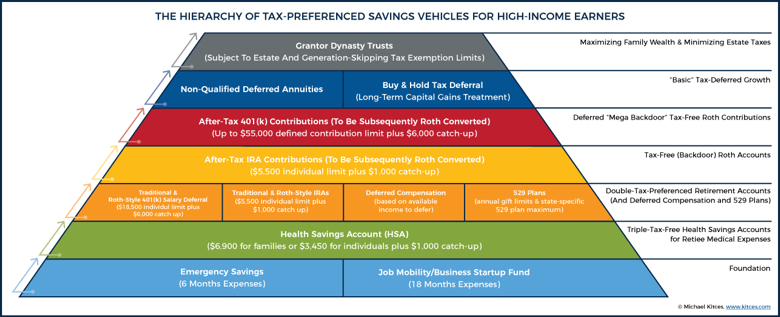 Contributed by: Josh Bitel, CFP®
Contributed by: Josh Bitel, CFP®
Does the SECURE Act affect your retirement accounts? If you’re not sure, let’s figure it out together.
Just about 2 months ago, the Senate passed the SECURE (Setting Every Community Up for Retirement Enhancement) Act. The legislation has many layers to it, some of which may impact your financial plan.
One major change is the elimination of ‘stretch’ distributions for non-spouse beneficiaries of retirement accounts such as IRAs. This means that retirement accounts inherited by children or any other non-spousal individuals at least 10 years younger than the deceased account owner must deplete the entire account no later than 10 years after the date of death. Prior to the SECURE Act, beneficiaries were able to ‘stretch’ out distributions over their lifetime, as long as they withdraw the minimum required amount from the account each year based on their age. This allowed for greater flexibility and control over the tax implications of these distributions.
What if your beneficiary is a trust?
Prior to this new law, a see-through trust was a sensible planning tool for retirement account holders, as it gives owners post-mortem control over how their assets are distributed to beneficiaries. These trusts often contained language that allowed heirs to only distribute the minimum required amount each year as the IRS dictated. However, now that stretch IRAs are no longer permitted, ‘required distributions’ are no longer in place until the 10th year after death, in which case the IRS requires the entire account to be emptied. This could potentially create a major tax implication for inherited account holders. All trusts are not created equally, so 2020 is a great year to get back in touch with your estate planning attorney to make sure your plan is bullet proof.
It is important to note that if you already have an IRA from which you have been taking stretch distributions from, you are grandfathered into using this provision, so no changes are needed. Other exemptions from this 10-year distribution rule are spouses, individual beneficiaries less than 10 years younger than the account holder, and disabled or chronically ill beneficiaries. Also exempt are 501(c)(3) charitable organizations and minor children who inherit accounts prior to age 18 or 21 (depending on the state) – once they reach that specified age, the 10-year rule will apply from that point, however.
Still uncertain if the SECURE Act impacts you? Reach out to your financial advisor or contact us. We are happy to help.
Josh Bitel, CFP® is an Associate Financial Planner at Center for Financial Planning, Inc.® He conducts financial planning analysis for clients and has a special interest in retirement income analysis.
Please note, changes in tax laws may occur at any time and could have a substantial impact upon each person's situation. While we are familiar with the tax provisions of the issues presented herein, as Financial Advisors of RJFS, we are not qualified to render advice on tax or legal matters. You should discuss tax or legal matters with the appropriate professional.




















